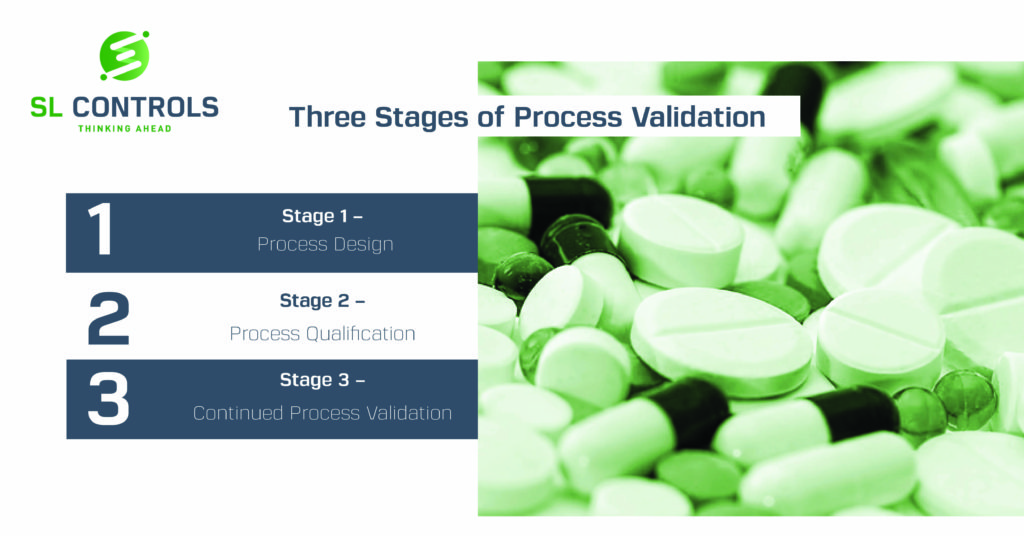The manufacture of safe and high-quality pharmaceutical products requires good manufacturing processes. This is the goal of Process Validation, i.e. ensuring pharmaceutical products consistently meet quality standards and expectations. The way to achieve this is through the Three Stages of Process Validation.
The Three Stages of Process Validation is a protocol published in 2011 by the Food and Drug Administration (FDA) in the US. Guidance from the European Medicines Agency published more recently promotes stages that are very similar.
The protocol applies specifically to pharmaceutical manufacturing and involves an approach to validation that covers the entire lifecycle of a product.
The underlying principle is that you cannot be sure of quality by only testing the finished product. Instead, you need to build in quality – as well as efficiency and safety – through each step of the manufacturing process. This is what the Three Stages of Process Validation aims to achieve.

The Three Stages of Process Validation
The definition of Process Validation from the FDA is as follows:
“The collection and evaluation of data, from the process design stage through commercial production, which establishes scientific evidence that a process is capable of consistently delivering quality products.”
The Three Stages of Process Validation are:
- Stage 1 – Process Design
- Stage 2 – Process Validation or Process Qualification
- Stage 3 – Continued Process Validation
Let’s look at each in more detail.
Stage 1 – Process Design
This is the research and development phase and involves defining a process for manufacturing the product. It usually includes the following:
- Creation of a Quality Target Product Profile (QTPP)
- Identifying Critical Quality Attributes (CQAs)
- Defining Critical Process Parameters (CPPs)
- Conducting risk assessments
From a regulatory point of view, an essential component of this stage is meticulous and comprehensive record keeping.
That said, the collection and evaluation of data as part of this Process Validation stage also has business benefits too. This is because you can use the data to optimise your production process, create efficiencies, and troubleshoot problems.
Stage 2 – Process Validation or Process Qualification
This stage evaluates/qualifies the process designed earlier to ensure it can reproduce consistent and reliable levels of quality.
It involves collecting and evaluating data on all aspects and stages of the manufacturing process. This includes:
- The building and facilities, i.e. ensuring they adhere to local regulations as well as pharmaceutical manufacturing regulations
- The transportation of raw materials
- Storage of raw materials
- The knowledge, training, and working practices of production line employees
- Every step of the process to turn raw materials into the finished product. This includes having pre-defined sampling points at various stages of the process.
- Finished product packaging, storage, and distribution
Another useful component of this stage of Process Validation is to develop contingency plans for situations where things go wrong.
Stage 3 – Continued Process Verification
Continued Process Verification involves ongoing validation during production of the commercial product to ensure the process designed and qualified in the previous stages continues to deliver consistent quality.
One of the main aims of this stage is to detect and resolve process drift.
The stage involves product sampling, analysis, and verification at various points in the manufacturing process, and requires the involvement of employees with quality control training.
Again, comprehensive record-keeping is required at this stage, including logging anomalies and issues with product quality.
Final Thoughts
The Three Stages of Process Validation are a regulatory requirement for pharmaceutical manufacturing, but they do not have to be exclusive to that sector. In fact, the stages can be useful to any production process that produces high-quality products where consistent reliability is essential.





